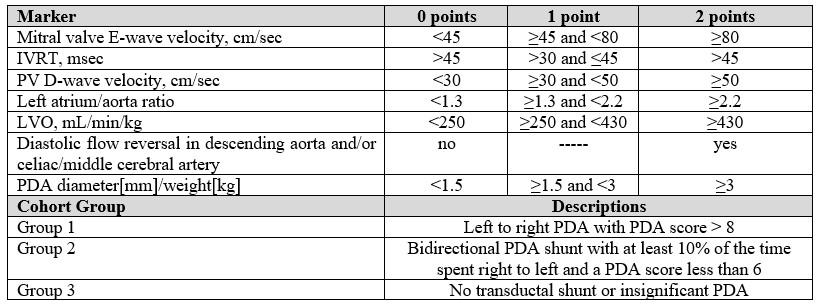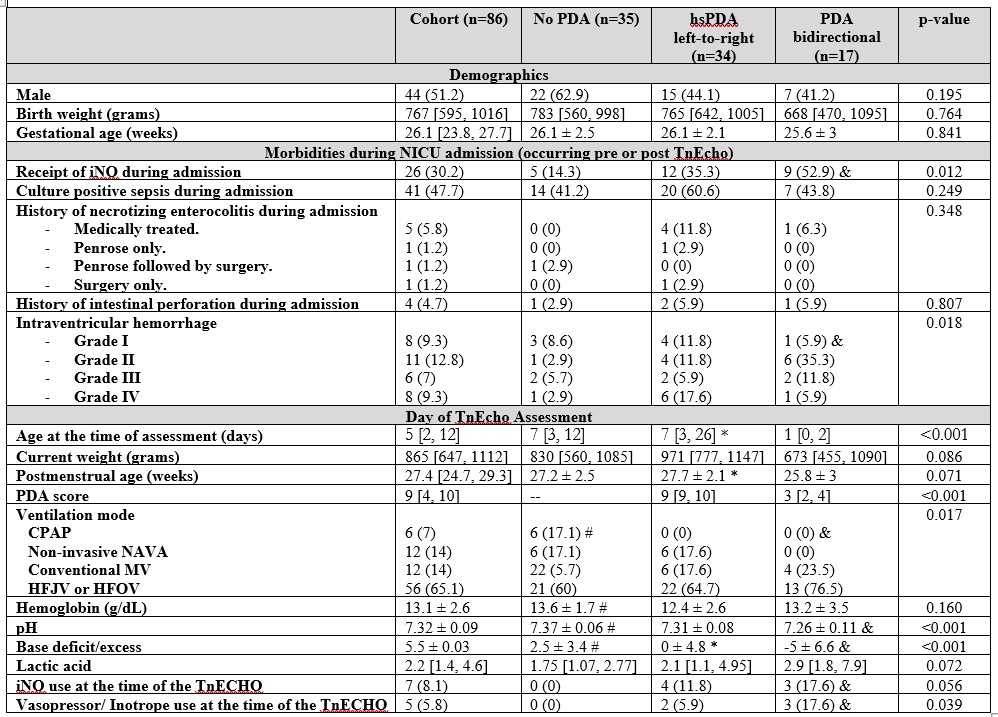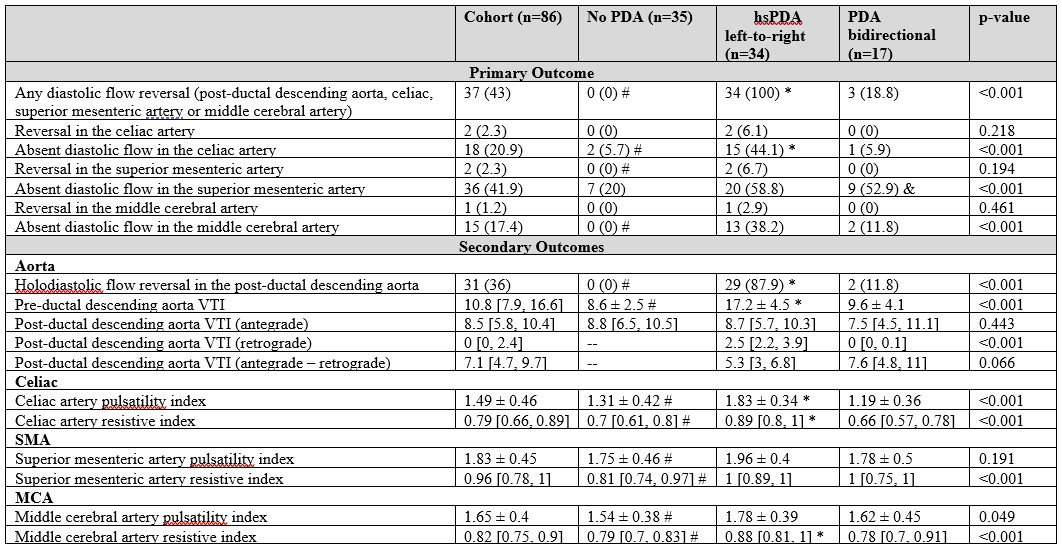Neonatology
Session: Neonatal Cardiology and Pulmonary Hypertension 1: PDA
82 - Pattern of systemic artery dopplers in relation to directionality and magnitude of patent ductus arteriosus shunt
Sunday, May 5, 2024
3:30 PM - 6:00 PM ET
Poster Number: 82
Publication Number: 82.2057
Publication Number: 82.2057
- JM
Joshua Mifflin, MD (he/him/his)
Resident
University of Iowa Stead Family Children's Hospital
Iowa City, Iowa, United States
Presenting Author(s)
Background: The presence of a hemodynamically significant patent ductus arteriosus (hsPDA) in neonates has been associated with morbidities related to lower systemic perfusion and vascular steal. Diastolic blood flow to the celiac artery, middle cerebral artery (MCA), and superior mesenteric artery (SMA) have not previously been well characterized in relation to the directionality and magnitude of PDA.
Objective: Detail systemic blood perfusion in the context of different patterns of PDA.
Design/Methods: A retrospective multicenter cohort study of preterm infants ( < 32 weeks gestation) who underwent targeted neonatal echocardiography in the first 40 postnatal days was performed. Patients were divided into 3 groups according to PDA pattern of shunt: no PDA, left to right hs PDA (PDA score >/=8), and bidirectional non-hsPDA (>10% of time spent right to left and PDA score < 6 – Table 1). The primary outcome was presence of diastolic flow reversal in systemic artery Dopplers. Secondary outcomes included pulsatility and resistive indices, flow velocities, pre- and post- ductal aorta (Ao) Dopplers, and clinical characteristics relative to each group.
Results: A total of 86 preterm infants [mean gestation 26.1 weeks (23.8, 27.7)] were identified: no PDA (n=35), hsPDA (n=34), and bidirectional non-hsPDA (n=17). Diastolic flow reversal in any vessel was present in 100% of infants in hsPDA group compared to 0% in no PDA group and 18.8% in bidirectional PDA (p < 0.001). In hsPDA group, while pre-ductal aorta (Ao) VTI was highest, post-ductal Ao VTI (antegrade flow – retrograde flow) was lowest relative to other groups. Systemic branch vessel diastolic flow reversal was rare [celiac (n=2), SMA (n=2), MCA (n=1)] and only occurred in hsPDA group. There was increased incidence of absence of diastolic blood flow in celiac artery of hsPDA group relative to other groups (p < 0.001) and in MCA of hsPDA group relative to no PDA group (p < 0.001). Both mean pulsatility and resistive indices in celiac were higher in hsPDA group relative to other groups (p < 0.001). Mean pulsatility indices of SMA (p < 0.05), and MCA (p < 0.05) were higher in the hsPDA compared to no PDA group.
Conclusion(s): Although holodiastolic flow reversal in the post-ductal arch is almost universal in patients with a hsPDA, diastolic flow reversal of systemic vessels is relatively uncommon in PDA physiology. Other factors including absence of diastolic blood flow or changes in pulsatility and resistive indices in systemic vessels, and differences in pre- and post-ductal Ao VTI measurements may aid better characterization of hemodynamic significance.



